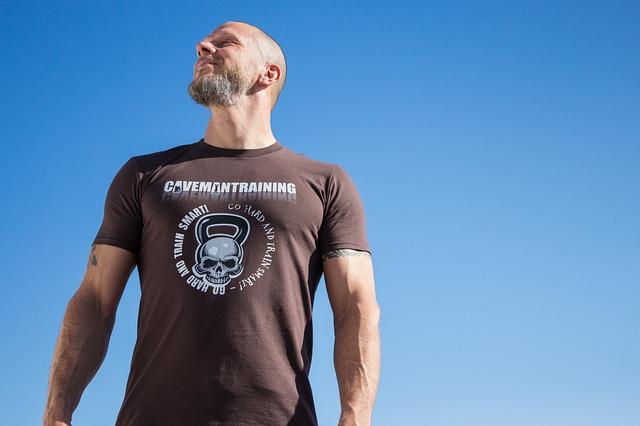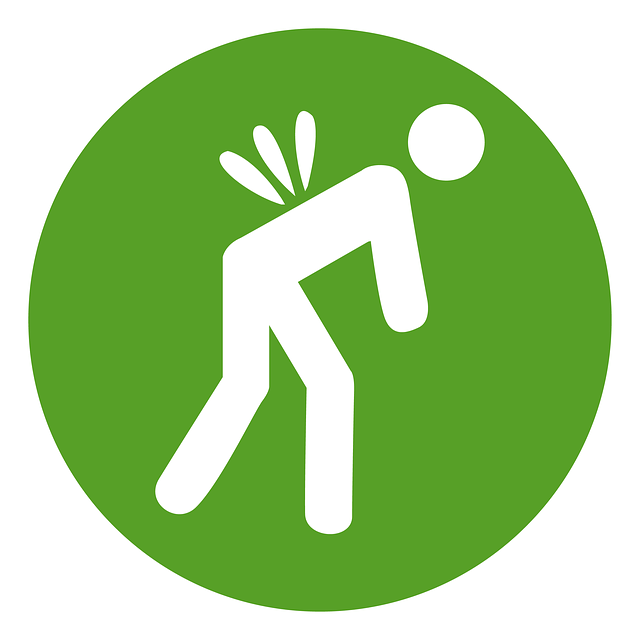Posts by Karen
For Spinal Stenosis Sufferers, Pain Relief is Possible
The Cox Technique has shown great efficacy in treating the symptoms associated with spinal stenosis
Surgery should be a last resort when it comes to spinal stenosis. We have found great success treating people with more conservative methods: chiropractic, noninvasive therapy and exercise allows people to keep the pain down and live well. The Cox Technique is one of the best modalities we have for managing spinal stenosis. It works because:
- Opens the spinal canal area
- Reduces intradiscal pressure
This method of flexion-distraction provides a soothing decompression to narrowing spines and allows for great improvements in spinal stenosis symptoms.
Living well despite spinal stenosis
It is an unfortunate reality that our spines are not designed to live as long as we are (at least not anymore). However, if you are suffering the effects of spinal stenosis, there are ways to make your life easier! Consider giving our office a call to schedule an appointment and learn about how the Cox technique can help with your spinal stenosis starting today!
The Way You Sleep Affects How You Sleep
Why is sleeping with poor posture harmful
Poor sleeping posture would like something like sleeping on your stomach After a night of this posture, the spine is likely to become misaligned and you are likely to experience a day of dull aching in the lower back. And while we can’t convince all stomach sleepers to flip onto their backs, there are steps you can take, like using a support pillow under the abdomen to prevent the spine from reversing its normal curvature.
Take control of your sleep life
If you are interested in flipping the script and making good sleep posture your norm, give our office in Park Slope a call to schedule an appointment today. We can help resolve pre-existing pain that is caused by vertebral misalignment so that you can sleep more soundly.
Guest Blog Post: Alternative Medicine for Pets
A short guide to caring for your pet naturally
The purpose of this article is to educate pet owners first and foremost. How?
Many people are unaware that it is possible to treat their pets with complimentary medicine like acupuncture and even better, to save their lives (yes, unfortunately, many pet owners resort to euthanasia because they don’t know that other treatments exist…not to mention natural as well).
There is so much to gain from treating your pet with alternative medicine (avoiding euthanasia, decreasing side effecrs, gentler treatments, etc) and few people know it…so this artice is our means of helping animals and their owners. We have interviewed several veterinarians who are quoted in the article and who also want to get the message out there.
To find out more read here:
The Problem with Prescription Drugs and Athletic Performance
You would be hard-pressed to find an athlete who would argue that chiropractic made them worse off
Chiropractic sports physicians focus on relieving pain and rehabilitating injury the natural way- without the necessity for surgical intervention or prescription drugs. The way we do this is by:
- Focusing on spinal alignment
- Releasing muscle tension
- Limiting the growth of scar tissue
- Increaing circulation and range of motion
Furthermore, by ensuring the alignment of the spine and thus balancing the body, we can prevent injuries from occuring in the first place.
Chiropractic is your ticket for improving reaction times and boosting performance
Success in sport is often determined by the finest of margins- the simple truth is that drugs take you one direction and chiropractic the other. If you are interested in adding chiropractic as an augment to your athletic repertoire, give our office in Park Slope a call to schedule an appointment today.
Why Athletes Should Care About Asymmetry
Athletes care about balance
So what does a balanced body look like? From a physical standpoint, it means that your body is in equilibrium- that unquantifiable state of being in which the different parts of your body work together in perfect harmony to support one another and distribute pressure equally. Even the least active person in the world is going to incur some pressure throughout the day, (chiefly through sitting, one of the hardest positions on the human body); a balanced body ensures that your likelihood for injury is at a minimum and your ability to perform your best is maintained. And of course, a balanced body begins with a properly aligned spine.
Asymmetry in the body sets the stage for injury
So what happens when your spine falls out of alignment? Asymmetry is a common result- one side of the body different than the other which usually translates to one side of the body incurring more pressure than the other. There are many factors that pull your spine out of alignment, including the presence of muscle tension, reduced mobility or pain that causes you to favor one side over the other.
How does chiropractic address asymmetry and maintain balance in Park Slope
We start with a comprehensive physical examination to determine whether asymmetry is affecting your muscular development or if subluxation is hindering your physical development in any way. Using chiropractic adjustments, we restore alignment to the spine, increase range of motion and reduce pain. If you have tight muscles that are creating a pull on the body, we use modalities such as trigger point therapy and active release technique to release soft tissues from tension.
Combating Scar Tissue Build-Up for Athletes
What happens when scar tissue builds up?
When soft tissues are damaged, whether due to acute injuries such as pulls, tears and strains, or due to repetitive trauma such as the accumulation of small tears in the muscle, scar tissue is a natural side-effect. Scar tissue forms in response to these injuries as part of the normal healing process- it is unavoidable.
The problem is that this new scar tissue is tougher and denser than what came before- it can bind to healthy tissue and create an epicenter of tightness that will make it diffult to move without pain. Scar tissue can even trap a nerve, leading to feelings of numbing and weakness that can be scary for athletes who are used to having an elevated range of motion.
What can athletes in the Park Slope area do about scar tissue build up?
While scar tissue is an unavoidable byproduct of healing, there are steps you can take to minimize it. While it is prudent to avoid stretching the injured region so as to avoid creating tension surrounding the injury, it is important to return to a full schedule of movement as soon as possible after an injiury. This helps to prevent excessive scar tissue from forming.
How can we help athletes in Park Slope minimize scar tissue and maximize their performance?
At our office in Park Slope, we offer services such as the Active Release Technique which seeks to facilitate the mobility of soft tissue after injury. This is an instrument-assisted adjustment that increases blood flow, decreases scar tissue and helps to improve range of motion following injury. Hands-on techniques including massage are also helpful for penetrating the soft tissue and encouraging a faster healing process with less scar tissue.
How we Help Athletes Reach their Goals
Chiropractic can be an important component of any athlete’s health plan
No matter what your sport or level of intensity, the human body can only take so much. Whether due to acute injury or repetitive trauma, the body is likely to take on strain and stress that result in pain. Listening to your body is an important part of preventing this pain from becoming somethine more serious. At our office in Park Slope, we help athletes stay on top of their pain and optimize the nervous system so that they gain an edge in competition.
Staying ahead of the competition with chiropractic care
- Mitigating the trauma: every sport has a unique set of demands for your body. We monitor the musculoskeletal health of your body as it goes through the different phases of development and specialization inherent in yours.
- Improving circulation: oxygenating muscles and facilitating the removal of waste products like lactic acid help your muscles repair and rebuild faster; it also brings nutrients to areas that are in need of repair.
- Protecting range of motion: alleviating nerve compression helps you feel less pain and move more freely.
- Preventing pain: by ensuring your body is balanced before your workout, we prevent injury from occuring to the joints, muscles and nerves that come under duress during workout.
Chiropractic for athletes in the Park Slope neighborhood
Chiropractic directly impacts athletic performance, making it a viable choice for athletes of all styles and abilities. If you are interested in learning more about how chiropractic can help you in your athletic life, give our office in Park Slope a call to schedule an appointment today.
Scalp Acupuncture in Park Slope
What is scalp acupuncture?
Scalp acupuncture is a form of neuro-acupuncture, a growing area of medicine which combines the knowledge of the central nervous system functioning as defined by Western medicine with the knowledge of energy pathways and needling techniques of Traditional Chinese Medicine. Scalp acupuncture is showing great promise treating both chronic and acute disorders of the central nervous system.
What conditions can be treated by scalp acupuncture?
Scalp acupuncutre is often utilized as a simultaneous treatment during the rehabilitation of people suffering from conditions including:
- Paralysis caused by stroke, MS, Parkinson’s disease and injury
- Pain related to the central nervous system
- PTSD
- Aphasia
- Ataxia
Acupoints in the scalp correspond to pathways that affect the neuroanatomy and neurophysiology of the patients. By inserting needles into these points, we effect a positive change in the symptoms presenting from the above-listed conditions.
Scalp acupuncture in Park Slope
Another benefit of acupuncture is that it stimulates feelings of relaxation in the brain and body, allowing people who are suffering to find a reprieve from their conditions. Furthermore, acupuncture is a low-risk procedure which carries few of the side effects inherent in pharmaceutical treatments. If you are interested in finding out more about how scalp acupuncture can help your condition, give our office in Park Slope a call to schedule an appointment today.
Neuro-Acupuncture: What to Expect
Neuro-acupuncture in Brooklyn
Neuro-acupuncture is a new technique that combines the tenets of Traditional Chinese Medicine with Western scientific research regarding the function of the brain. Acupuncture is well known for its capacity to optimize the body’s natural mechanism for healing and now acupuncture is being studied as a treatment for disorders of the brain. Neuro-acupuncture has shown great promise in treating both acute and chronic nervous system disorders with very few side-effects.
What conditions can be treated with neuro-acupuncture
- Stroke
- Paralysis
- Parkinson’s Disease
- Bell’s Palsey
- Traumatic Brain Injury
- Multiple Sclerosis
- Neuropathy
- and more
How does neuro-acupuncture work?
There are three forms of neuro-acupuncture which are all based upon the functioning of the nervous system.
- Scalp acupuncture: targets points on the head and directly impacts the central nervous system.
- Auricular acupuncture: targets points on the ears and impacts the central nervous system.
- Biomedical acupuncture: also known as Integrative Neuromuscular Acupoint System, this type targets acupoints throughout the body that affect both the peripheral and central nervous systems.
What to expect with neuro-acupuncture
We target acupoints, both in the head and throughout the body, that correspond to your particular condition and insert thin needles to stimulate the body’s nervous system. The needles are left in for 30 minutes in which time many people find their breathing will slow and feelings of relaxation will set in.
Your neuro-acupuncture specialists in Brooklyn
At Community Chiropractic & Acupuncture, we are your go-to resource for neuro-acupuncture in the Park Slope neighborhood. If you are interested in finding out how acupuncture can help with your neurological condition, give our office a call to schedule an appointment.
Surviving Sciatica with the Cox Technique
The Cox Technique offers natural pain relief for people suffering from sciatica
When it comes to dealing with the debilitating and annoying pain of sciatica, many people have found relief with the Cox Flexion Distraction technique. Using a specialized table, which can be moved and adjusted to account for your specific condition, we put you in a position of comfort that relieves pressure from the back and neck. Once we have established a relaxing position, we perform low-force adjustments with the goal of creating a vacuum effect in the affected region. In the case of a herniated disc impinging on the sciatic nerve, the bulging material will retract into its original place and stop causing sciatic nerve pain.
Cox Flexion Distraction technique in Park Slope, Brooklyn
The Cox technique is an important part of the natural pain relief that we offer at our office in Park Slope. If you are interested in finding out how Cox Flexion Distraction can help you overcome sciatic nerve pain, give our office a call to schedule an appointment today.










